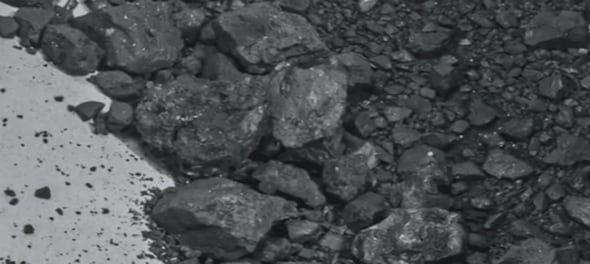
NASA on Wednesday revealed that its first asteroid samples, which were delivered last month by a spacecraft, contained abundant water and carbon. The sample from the 4.5 billion-year-old asteroid Bennu provides more evidence for the theory that life on Earth was seeded from outer space, the news agency AFP reported.
“NASA asteroid sample contains life-critical water and carbon. The discovery follows a seven-year-round-trip to the 4.5-billion-year-old asteroid Bennu,” the news agency tweeted.
NASA asteroid sample contains life-critical water and carbon.
The discovery follows a seven-year-round-trip to the 4.5-billion-year-old asteroid Bennuhttps://t.co/Zw2mEwtNM6 pic.twitter.com/V8XJ43EDtV— AFP News Agency (@AFP) October 12, 2023
At Johnson Space Center in Houston, on Wednesday, NASA scientists for the first time showed the samples of the asteroid, which was received in September.
“Initial studies of the 4.5-billion-year-old asteroid Bennu sample collected in space and brought to Earth by NASA show evidence of high-carbon content and water, which together could indicate the building blocks of life on Earth may be found in the rock,” NASA said.
This finding was part of a preliminary assessment of NASA’s OSIRIS-REx (Origins, Spectral Interpretation, Resource Identification and Security–Regolith Explorer) science team, the US space agency said.
According to NASA, the sample is the biggest carbon-rich asteroid sample ever delivered to Earth, which will help scientists investigate the origins of life. It is the third asteroid sample following two similar missions by Japan’s space agency in 2010 and 2020.
The total sample is present in both organic and mineral form while the water has been found to be locked inside the crystal structure of clay minerals.
“The bounty of carbon-rich material and the abundant presence of water-bearing clay minerals are just the tip of the cosmic iceberg. These discoveries, made possible through years of dedicated collaboration and cutting-edge science, propel us on a journey to understand not only our celestial neighbourhood but also the potential for life’s beginnings,” said Dante Lauretta, OSIRIS-REx principal investigator, University of Arizona
The collection of the asteroid sample is a joint mission undertaken by NASA and the University of Arizona.
According to NASA, for the next two years, the mission’s science team will continue characterising the samples and conduct the analysis needed to meet the mission’s science goals. The space agency will preserve at least 70% of the sample at Johnson Space Center for further research by scientists worldwide.
The capsule and its contents were initially examined in a clean room at the Utah Test and Training range near the landing site of the asteroid. Following the initial examination, it was then sent to the Johnson Space Center where its inner canister has been opened to obtain the samples and has been parcelled in smaller specimens to around 200 scientists in 60 laboratories across the world.
Asteroid Bennu is said to be a relic of the early solar system as the current chemistry and mineralogy of it has been virtually unchanged since the date of its formation around 4.5 billion- years ago. Scientists believe that it holds the history of the origins and development of rocky planets such as Earth.
(Edited by : Sudarsanan Mani)
Check out our in-depth Market Coverage, Business News & get real-time Stock Market Updates on CNBC-TV18. Also, Watch our channels CNBC-TV18, CNBC Awaaz and CNBC Bajar Live on-the-go!


Supreme Court dismisses plea seeking postponement of CA exams; details here
Apr 29, 2024 2:29 PM
Just 8% women candidates contested first two phases of Lok Sabha polls
Apr 29, 2024 12:00 PM
The sexual assault case against Prajwal Revanna — here's what we know so far
Apr 29, 2024 11:36 AM
Repolling underway at one polling booth in Chamarajanagar LS segment in Karnataka
Apr 29, 2024 10:32 AM

